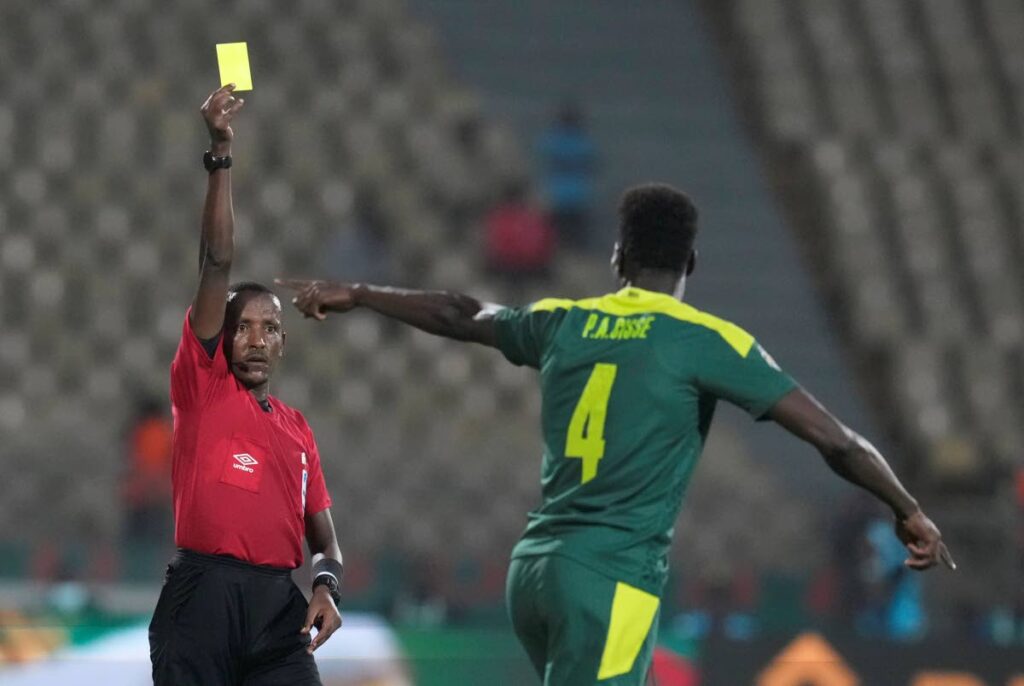The official’s eye

WE as fans and lovers of sports whenever spectating a game or competition of some kind are often, if not always, cheering for a particular athlete or team. Even if in attendance at a competition in which no particular team is a favourite, you tend to find yourself cheering for someone. It’s simply the nature of competitive sport: when teams or individual athletes are performing, we want to see them excel and possibly win, and crowd backing really spurs them along.
But there are individuals within the sporting environment who never receive a cheer or backing. Funnily enough, they are usually the recipients of quite the opposite; they are usually questioned, sometimes booed and often the butt of many jokes throughout a match or competition. Have you figured out who I’m referring to? I’m talking about competition officials: referees, umpires, and the likes. They are very often the overlooked and under-appreciated third party in a game or team contest, after all, no one comes to support the umpire or referee and they are usually disliked by at least one group of fans by the end of a match (usually the losing team).
In sport psychology, however, referees, umpires and officiating individuals fall into a very unique subset of performers who master and draw upon many psychological skills to endure such high-pressure situations while still making “good” decisions. Poor refereeing decisions can have “devastating consequences from an economic and social perspective for clubs and fans, and also for athletes and teams,” (Guillen, 2003).
But what do referees really do? They evaluate and judge the actions that take place during the match, make fast decisions, manage the game, pay attention to multiple aspects of the game, keep order, and solve disputes according to Tuero et al., 2002. All of this not only makes the job very complex but also makes it easy to commit mistakes. One of the main consequences of a referee’s constant decision-making is that the objectivity of their decisions comes into question and they oftentimes receive harsh criticism for any mistakes made (Anderson and Pierce, 2009). This criticism usually comes from players, coaches, managers, fans and the media.

Indeed, referees have such high-performance demands that researchers have developed conceptual models revolving around referee specific efficacy and what feeds into such. Referee efficacy according to Guillen and Feltz (2011) is defined as, “the extent to which referees believe they have the capacity to perform successfully in their job.”
Quite like the original studies around self-efficacy by Bandura (1977), referee efficacy has varying dimensions that feed into it. So, what have researchers found to be the dimensions of referee efficacy or “refficacy” as it is called? There are six main dimensions:
– Game knowledge: knowing the rules of their sport, understanding proper officiating mechanics, and understanding the basic strategy of the game as examples of game knowledge.
– Strategic skills: knowing where to stand on the field/court and how to move, making the correct gestures each time and anticipating actions. Focus group members mentioned staying up with the play, being at the proper angles for decisions, and anticipating game actions
– Decision-making skills: the speed and accuracy with which you are able to make calls, accuracy of judgements and being firm in one’s decisions.
– Psychological skills: Concentration, attentional control, resilience, recovering from mistakes, composure under pressure and setting professional goals.
– Communication/control of the game: communicating effectively with players, coaches, and co-officials, maintaining control of the game, player management and resolving disputes.
– Physical fitness: the ability to keep up with the speed of play, physical endurance and conditioning.
So, the next time you’re watching a game or competition take note of the referee, umpire or official and reflect on some of the areas highlighted above.
Feel free to submit any questions to alexandriaolton@outlook.com

Comments
"The official’s eye"